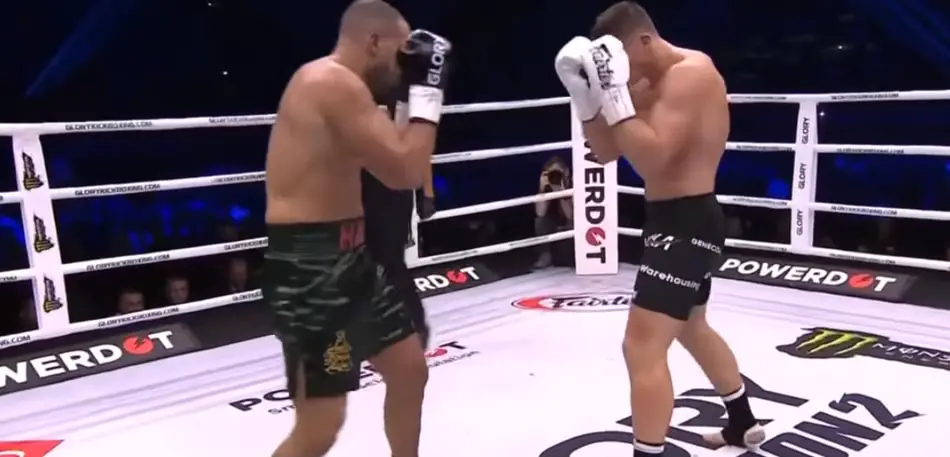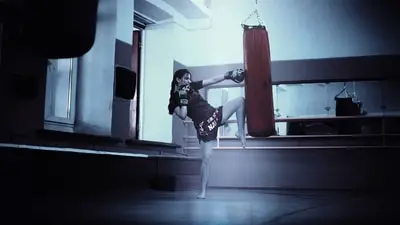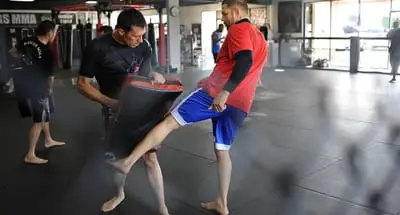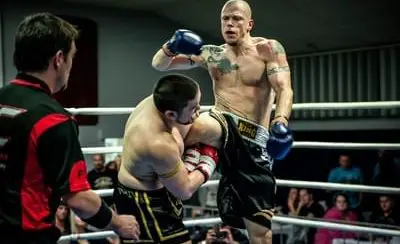
KIckboxing is considered the ultimate striking combat sport. But why it isn’t in the Olympics yet since it originated back in the late 1950s?
Why is Kickboxing not an Olympic sport? There are several reasons for that. The first one is that kickboxing is considered a brutal sport by the Olympic committee. Olympics are watched by the whole world and the committee wants to make sure they don’t promote violence.
The second reason is that there are already 2 kicking and punching sports in the Olympics and those are Karate and Taekwondo. IOC (International Olympic Committee) is trying to avoid having too many similar sports in the Olympics.
World Kickbox Association (WKA) tried for a long time to make IOC include kickboxing in the Olympics but without success because of these reasons.
Now there are different types/styles of kickboxing. There is point fighting kickboxing, like some types of karate where competitors throw quick controlled strikes to score points.
On the other end of the spectrum we have full-contact kickboxing (for example K1 rules) where kickboxers throw punches and kicks with full power trying to beat their opponent.
Generally, when people say kickboxing they mean the full-contact sport. And this is the sport I’m referring to in this article.
We as combat sports fans know that watching kickboxing isn’t going to make kids more violent. At best it’ll influence them to go to the local kickboxing/muay thai gym and start training. But unfortunately, that’s not the opinion of the majority of people.
In the rest of the article, I’m gonna talk in more detail about the reasons why kickboxing isn’t in the Olympics and is there any chance to be included any time soon. If you’re interested continue reading.
Olympic Sports Criteria
There are 35 criteria IOC have for sports to consider including them in the Olympics. But the most important ones are:
- Popularity – how popular is the sport around the world? Are there enough people from different countries practicing it? And most importantly – how popular is among young people.
- Gender equality – are there enough female practitioners?
- Sport’s image – does the sport represents the Olympic values? What is the history of the sport?
- Institutional – are there world/continental organizations that host competitions for that particular sport? How those federations are organized and what is their financial status?
- Business-wise – How much money the sport can generate and what are the expenses of organizing competitions
Kickboxing is a popular sport all around the world and it has governing organizations – the World Kickbox Association (WKA) and the World Association of Kickboxing Organizations (WAKO).
It’s increasing its popularity among the younger generations especially since MMA became so popular (and kickboxing is a big portion of MMA). Also, there are many female practitioners/competitors and the sport generates a good amount of income.
The only problem with the criteria is kickboxing’s image. As I already mentioned a lot of people think it’s brutal because it’s a full-contact sport and often there are knockouts; knockdowns and cuts.
Taekwondo and Karate
There are 5 combat sports in the Olympics – judo, wrestling, boxing, karate, and taekwondo. Judo and wrestling are grappling martial arts, boxing is a striking martial art with only punches and Taekwondo and Karate are similar to kickboxing.
And as we see with other sports too, for example, Sambo, the Olympic committee doesn’t want too many similar sports especially when it comes to martial arts.
Now, even though in Taekwondo and Karate kicking and punching is allowed, you can’t kick the opponent’s legs which as we know thanks to kickboxing and Muay Thai it changes the fighting dramatically. Also in taekwondo, you can’t punch the opponent in the head. In Olympic karate, you can do that but you should control your strikes and hit with no power (aka point fighting).
Taekwondo is the more “brutal” of those two sports in the Olympics because kicks to the head are allowed and the main objective is to knock your opponent out.
The other full-contact Olympic sport is boxing but it’s amateur boxing which is a little different than professional boxing we used to watch.
In amateur boxing, there are only 3 rounds (instead of 12), competitors wear headgear and the number punches landed is the most important factor that determines the winner. That’s why usually we see more volume instead of power in Olympic boxing and stoppages are much rare than in pro boxing.
As you can see all striking combat sports in the Olympics aren’t exactly full-contact. And that’s not is what true martial arts fans want to see.
WAKO – Recognized by IOC
In 2018 International Olympic Committee granted provisional recognition to WAKO – World Association of Kickboxing Organizations. That doesn’t mean kickboxing is going to be in the next Olympic games but it’s a step forward in that direction.
The provisional recognition period is 3 years. In that period WAKO will receive funding from the IOC and within that period IOC will decide if they are going to grant full recognition. And we’ll know if kickboxing is going to be in the Olympics.
Currently, the chance for that to happen is slim but kickboxing fans are hoping that will change.
Styles of Kickboxing in the Olympics
Since there are several different kickboxing styles depending on the rules, some of those styles have a better chance to get in the Olympics. Let’s take a look at them.
K1 Style
K1 style is all about action. It’s a full-contact style in which clinching isn’t allowed for more than 5 seconds and foot sweeps and throws are forbidden.
Elbows are forbidden because of the cuts they cause. In other words, people who created the K1 style tried to increase the chance of a knockout as much as they could. That style has the smallest chance to get in the Olympics.
No Low Kicks rules
This is a full-contact style where you can throw punches the head and the body and kick to the head and body. You can’t throw leg kicks, knees, and elbows.
Point Fighting rules
Point fighting is when you control your strikes and don’t punch with power, just trying to score points. Punches and kicks the head give you most points. Foot sweeps are allowed too and they are scored.
Kickboxers fighting on those rules, wear headgear, shinguards as well as gloves and groin protectors. Which is good because the IOC requires all combat sports practitioner to wear as much protecting gear as possible.
This type of kickboxing has the best chance to be recognized as an Olympic sport because it’s the least dangerous.
Savate
There is a kickboxing style called Savate which may have the best chance of becoming an Olympic sport. It’s not the kickboxing we want in the Olympics – it’s a “softer” version of it but because of that IOC may like it.
Savate is a French kickboxing style. It’s very similar to taekwondo but fighters are allowed to throw classic boxing punches to the head. They also wear specific boots (very similar to boxing shoes) and when kicking they are allowed to make contact only with the boots, not the shin.
There are two types of savate – Assaut and Combat.
Combat savate is full-contact, while in Assaut savate you need to control your stikes (point fighting). There are no knockouts or blood in Assaut savate, just technique and quickness. That’s why some people think it may get in the Olympics in the next 5-10 years.



